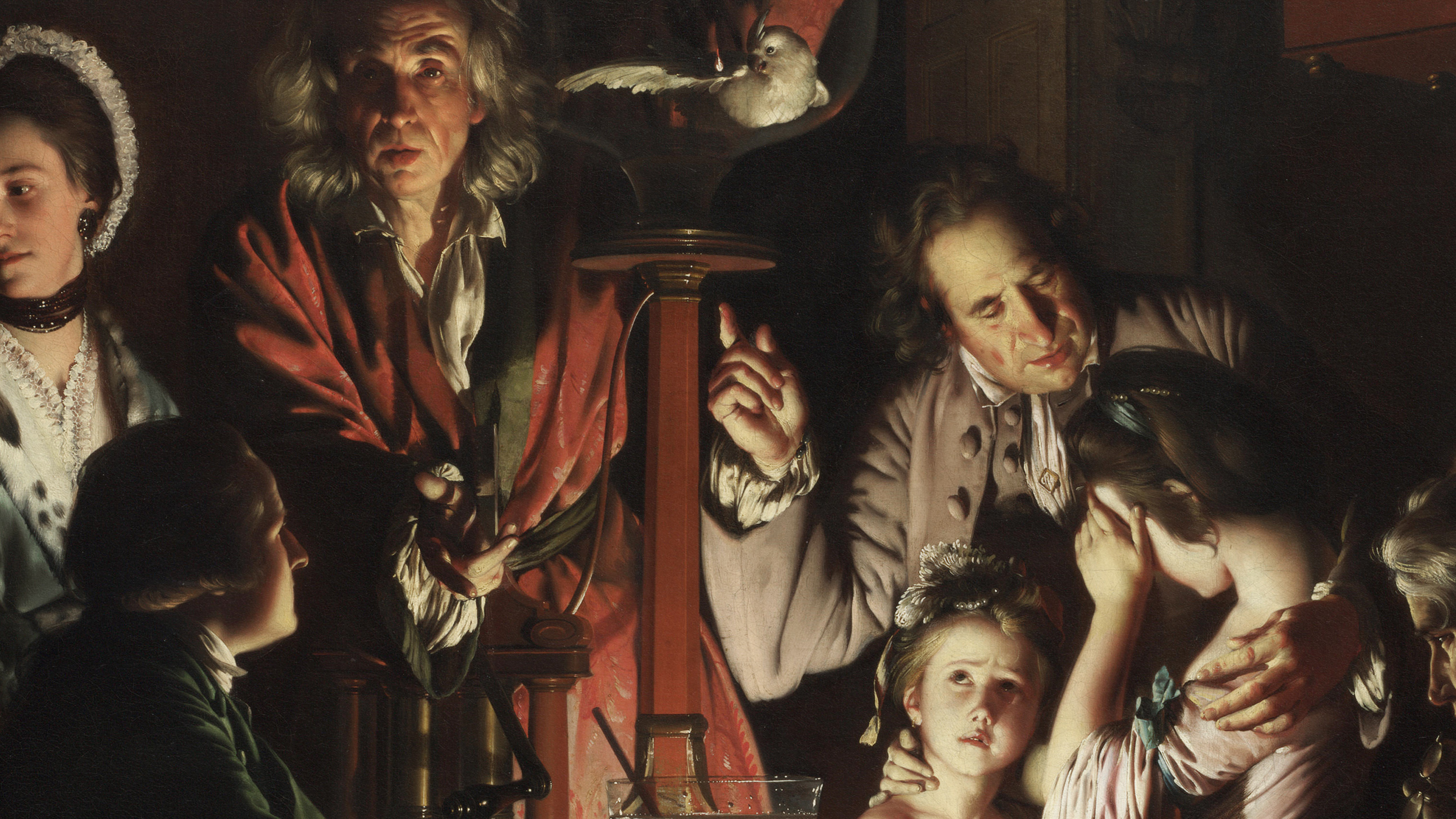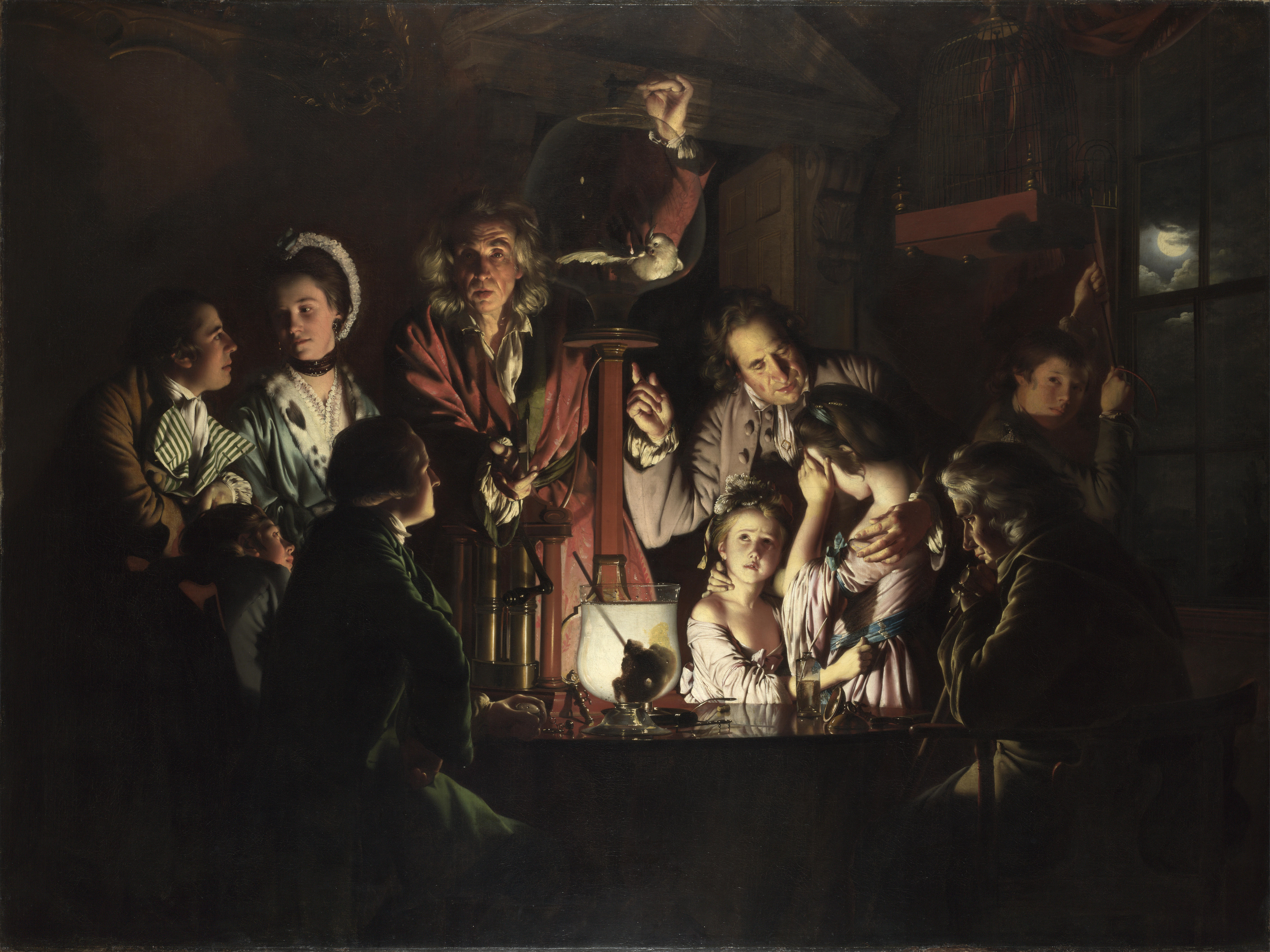How suffocating birds introduced Europe to the Scientific Revolution

- A painting by Joseph Wright of Derby juxtaposes different attitudes toward early science.
- For most of the figures in the painting, scientific curiosity wins out over compassion for living things.
- The painting campaigned for a world in which research would be regulated by a code of ethics.
In 1659, the Anglo-Irish chemist and natural philosopher (an early term for “scientist”) Robert Boyle presented an invention he called the “pneumatic engine.” Essentially an air pump, it was used to study the physiological processes of living things by reducing barometric pressure, providing concrete evidence for the biological importance of oxygen.
A pioneer of the scientific method, Boyle was proud of his air pump, and he believed wholeheartedly in the advances that it could lead to. At the same time, the more he tested the contraption, the more he was overcome by a sense of guilt. In a little-known manuscript titled “Moral Epistle Concerning Ethics of Treatment of Animals,” he acknowledged the anguish he incurred using the pneumatic engine on birds and other small creatures. In these pages, his unwavering faith in progress competes with another, seemingly contradictory emotion: a renewed appreciation for the divinity and sanctity of life.
Boyle’s situation wasn’t unique. Numerous people in Europe, the Americas, and the Islamic world expressed anxiety about how advances in science and technology were altering the way humanity made sense of the world and their place in it.
Illustrating this point even better than “Moral Epistle” is a 1768 oil painting by English artist Joseph Wright of Derby. Called An Experiment on a Bird in the Air Pump, it depicts a natural philosopher demonstrating Boyle’s invention in front of an upper-class household. With his trademark use of chiaroscuro — a heightened contrast between light and dark — Wright directs our attention at the expressions of the participants, each of whom has a different reaction toward the experiment and its outcome. To those living in the 21st century, the painting provides an overview of what average Europeans thought about the death of God and the rise of reason.
Testing the pneumatic engine
Before looking at these different reactions, it’s important to note that — by the time Experiment on a Bird was unveiled — the pneumatic engine was no longer the technological novelty it had been when Boyle first unveiled it a century earlier. It was, however, slowly becoming available to the general public, and it is this development that Wright, a portraitist of the scientific revolution and a proponent of the democratization of knowledge, sought to depict.
While many upper-class households in 18th century Europe were familiar with the pneumatic engine, they had only ever seen them illustrated in books and newspapers. Demonstrations, in lecture halls or in dining rooms, were still somewhat of a novelty, and seeing the engine in action was considerably different from reading about it on a yellowed piece of paper. The sounds, the smells, and the actual sight of the suffocating bird could evoke wonder in one bystander and terror in another.

Experiment on a Bird features ten human figures, their faces lit by a candle. The brightest — and therefore the one that attracts the viewer’s attention before anyone else — is that of a young girl. Clearly distressed, she looks up at the bird trapped in its glass chambers. Her arms are wrapped tightly around another girl, possibly her older sister, who is so frightened she cannot even bare to look. Comforting the girls is a man, perhaps their father, who raises his finger as if he is about to explain to her what is going on and, by extension, why she need not be afraid.
Left of the father is the natural philosopher carrying out the experiment. With his face half lit and half darkened by shadow, he moves with the grace of a magician. Behind him, further obscured by darkness, is a couple in love — so in love that, rather than observing the experiment, they look only at each other. Below them, seated at the table, are two men doing exactly the opposite. Their eyes fixed on the engine, they eagerly wait for the magician to perform his trick. Equally excited is the young boy closing the curtains on the right, a stark contrast with what are presumed to be his sisters.
The last figure that the viewer is likely to notice is arguably the most important in the entire composition. Seated and shrouded in darkness is an old man who, hands folded, looks not at the engine but at a human skull placed on the table. Contemplating the fragility and meaning of life, he stands in opposition to the father and the philosopher, both of whom are so caught up in the details of the experiment that they fail even to acknowledge the dying bird.
Ethics of science
Traditionally, art historians studying Experiment on a Bird have focused on the juxtaposition between the old man, the father, and the natural philosopher — scientific pessimism versus optimism. But people’s attitude toward this watershed stage in the history of civilization was more complex than that, and Wright — true to his reputation as a sensitive observer of both humans and human ingenuity — portrays multiple colors on the spectrum. The girls could represent naivité, innocence, and fear of the unknown. Their little brother, meanwhile, could only be interested in the experiment because of a boyish sadism. According to Matthew Morgan, formerly of the National Gallery, the two seated men behave suitably for their time: stoic and emotionless. One even pulls out a stopwatch to time how long the bird has left.
When all ten reactions are tallied, a pattern emerges. For most of the onlookers, curiosity overpowers their compassion for other living things. The core message of Wright’s painting is even clearer in the 21st century, a time when trust in progress and the inherent goodness of technological advancement has been irreparably damaged by a host of science-driven disasters, from Nazi medical experiments to the bombings of Hiroshima and Nagasaki and more.
Experiment on a Bird, much like the writings of Boyle himself, campaigns for a future where scientific research is guided by a code of ethics, religious or humanist. It is for this reason that the celebrated inventor of the air pump resolved to limit not just the severity of his experiments, but also the number of test subjects he used in them. Ultimately, Boyle’s experience as a natural philosopher taught him a lesson that conventional philosophy and theology had already formulated: that nothing, not even the testing of an air pump, can justify gratuitously inflicted pain.





